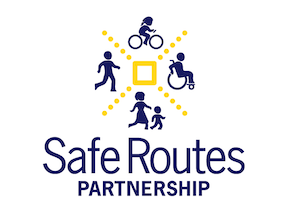This report shows that physical activity among adults and high school students is higher in some states than others. Overall, most states have environmental and policy strategies in place that encourage physical activity.
Steps to a Walkable Community compilesmultidisciplinary tactics that readers can assemble into customstrategies designed for their community’s circumstances. The guidecontains tactics for building or rebuilding cities and suburbs in ways thatencourage walking.
Released in April 2014, the 2014 United States Report Card on Physical Activity for Children and Youth assesses the levels of physical activity and sedentary behaviors in American children and youth, facilitators and barriers for physical activity, and related health outcomes.
According to CSBA’s research with school governance teams in California, schoolboard members recognize the link between student health and academicachievement, but when faced with a multitude of competing priorities and limitedresources, are hard pressed to make wellness a high priority in the district/COE.
In December 2012, the U.S. Department of Health and Human Services (HHS) released The Physical Activity Guidelines for Americans Midcourse Report: Strategies to Increase Physical Activity Among Youth.
Complete Streets: Best Policy and Implementation Practices is the result of a collaborative partnership among the American Planning Association (APA), the National Complete Streets Coalition (NCSC), and the National Policy and Legal Analysis Network to Prevent Childhood Obesity (NPLAN).
School districts are responsible for the education of almost 50 million public school students. This report identifies the larger community interest in decisions about retaining existing schools and deciding where to locate new ones.
GIS mapping examples of poor siting decisions are used to help the reader understand the importance of making better school site decisions using a collaborative, data informed, objective process.
Arizona Department of Health Services partnered with the Arizona Department of Transportation SafeRoutes to School Program to develop a tool that generates a score which represents the walkability,bikeability, and safety of the school (existing or proposed) location.
The Boyle Heights/East Los Angeles (BHELA) Community Health Assessment explores the nexus between the built environment, public policy, and urban planning in an effort to determine their impact on the health and wellbeing of residents in Boyle Heights and East Los Angeles.

